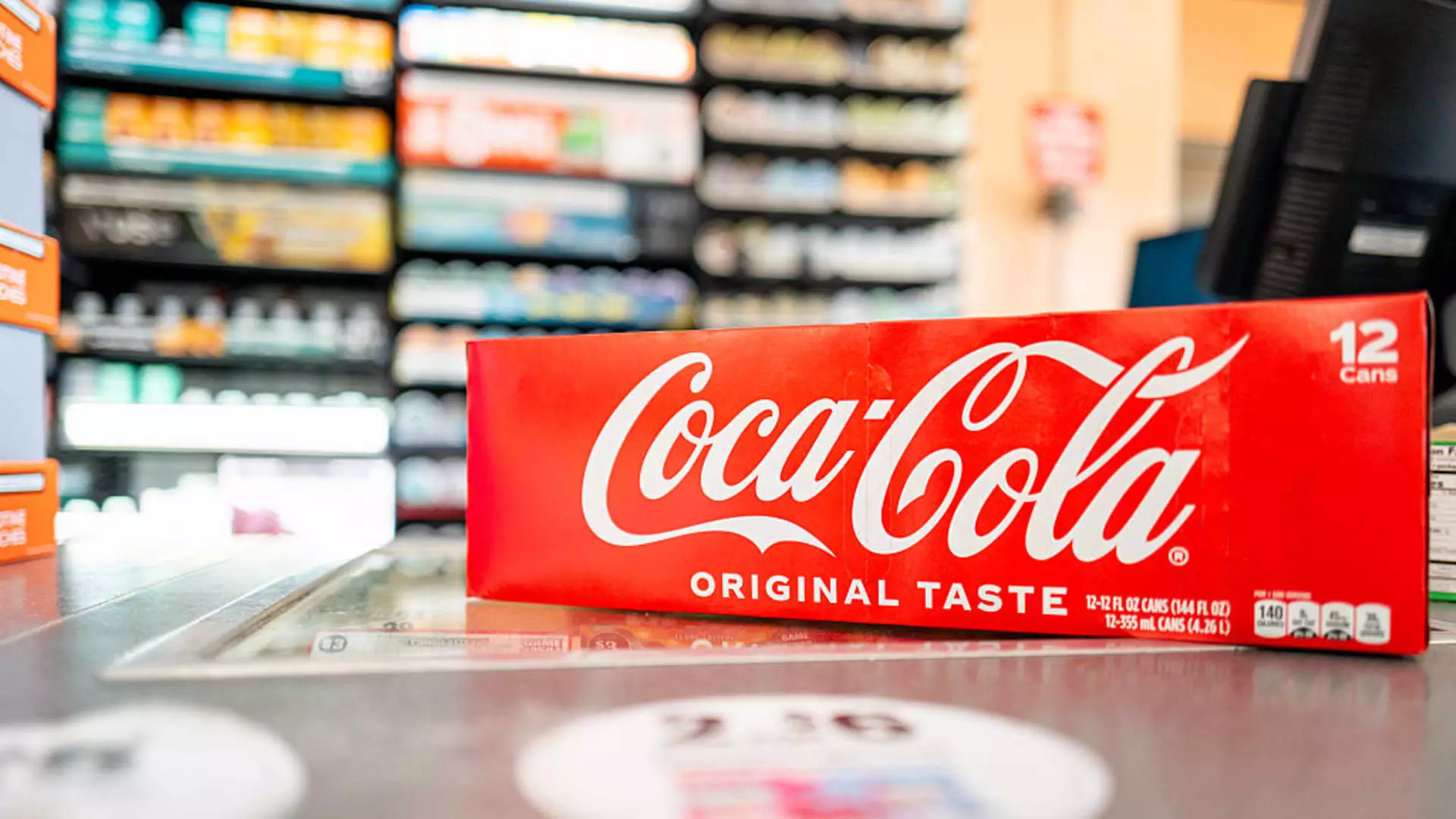Coca-Cola’s latest quarterly report presents an intriguing paradox: the company surpasses Wall Street’s expectations yet struggles amidst a backdrop of declining volume in most markets. While the figures—an 87-cent adjusted earnings per share and $12.62 billion in revenue—appear to showcase resilience, they mask underlying fragility. The company’s ability to report better-than-expected results is misinterpreted by many as a sign of robust health, but a closer analysis reveals concerns that should not be dismissed lightly.
Coca-Cola’s impressive growth in earnings primarily stems from strategic pricing and product mix optimization rather than genuine consumer demand. The reported 1% increase in net sales, coupled with a 5% organic revenue growth, underscores the importance of focusing on what remains unchanged—namely, the volume decline in various markets. It becomes clear that the company is increasingly reliant on price hikes rather than volume increases. This approach, while temporarily boosting top-line figures, is not a sustainable path forward. Consumers, especially in a fragile economic environment, are showing signs of fatigue and cautious spending, which puts future growth at risk.
The Illusion of Market Resilience
Throughout the report, Coca-Cola’s executives tried to project optimism, highlighting improvements in some markets like Europe and the United States. Yet, these are relative successes in a broader context of contraction. The global unit case volume fell by 1%, and in key regions like Latin America, Asia-Pacific, and other emerging markets, the declines—ranging from 2% to 3%—suggest that demand is softening. The fact that the EMEA segment experienced a 3% increase in volume is more a reflection of regional variance than an indication of widespread recovery.
Crucially, the company’s narrative about “improving volumes” in certain markets glosses over the fact that overall demand is waning. The so-called “improvement” merely reflects a stabilization rather than growth. The persistent declines in core segments—such as juice, dairy, and water—highlight the shifting consumer preferences away from traditional soft drinks. Amid rising health consciousness and a crowded beverage landscape, Coca-Cola’s reliance on carbonated soft drinks becomes increasingly problematic. Its attempt to introduce a cane sugar version of the classic soda this fall suggests an acknowledgment of consumer desire for more “natural” ingredients, but it also indicates a reactive rather than proactive strategy.
Economic Tensions Reveal Fragile Consumer Confidence
The report also unearths deeper economic anxieties that could threaten Coca-Cola’s future. The company explicitly mentions “economic uncertainty and geopolitical tensions” weighing on consumer confidence. This acknowledgment should give pause to investors who see these factors as temporary hurdles. The decline in sales among Hispanic consumers, allegedly linked to misinformation about immigration issues, exemplifies how social and political climates can impact consumption behaviors in unpredictable ways.
Furthermore, Coca-Cola’s cautious outlook for the full year—narrowing its earnings growth forecast to 3%—exposes an underlying apprehension. The company’s focus on “influencing the trajectory” of its results hints at an understanding that current efforts may not be enough to sustain growth. The reliance on price increases and targeted marketing amid declining volumes signals a strategy more suited to patching short-term revenue gaps rather than fostering long-term consumer loyalty.
Strategic Fluctuations Signal a Reckoning
The company’s plan to reintroduce a cane sugar soda in the U.S. reveals an attempt to adapt to shifting consumer tastes. However, this move seems more like a band-aid than a comprehensive reimagining of its product portfolio. Coca-Cola’s core brands are under threat from emerging competitors and healthier alternatives, emphasizing that the company cannot simply continue to lean on its legacy to sustain growth.
Overall, Coca-Cola’s recent earnings report is a mixed bag: a testament to its formidable brand presence but also an ominous indicator of deeper vulnerabilities. The reliance on pricing tactics, regional volatility, and external economic pressures suggests that the company’s current trajectory is more fragile than it appears. Without a meaningful shift towards innovation and a genuine understanding of evolving consumer needs, Coca-Cola risks becoming a relic in a rapidly changing beverage landscape.

